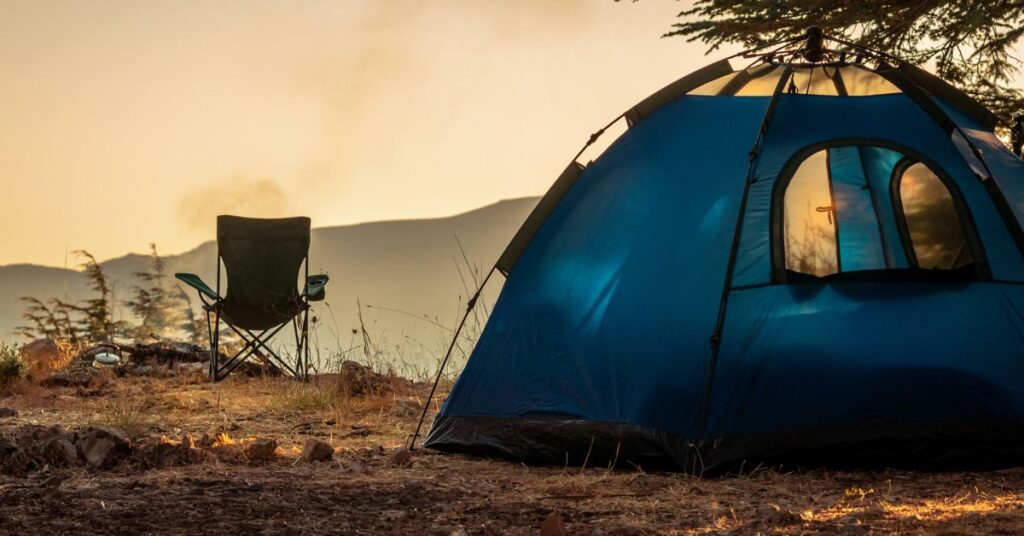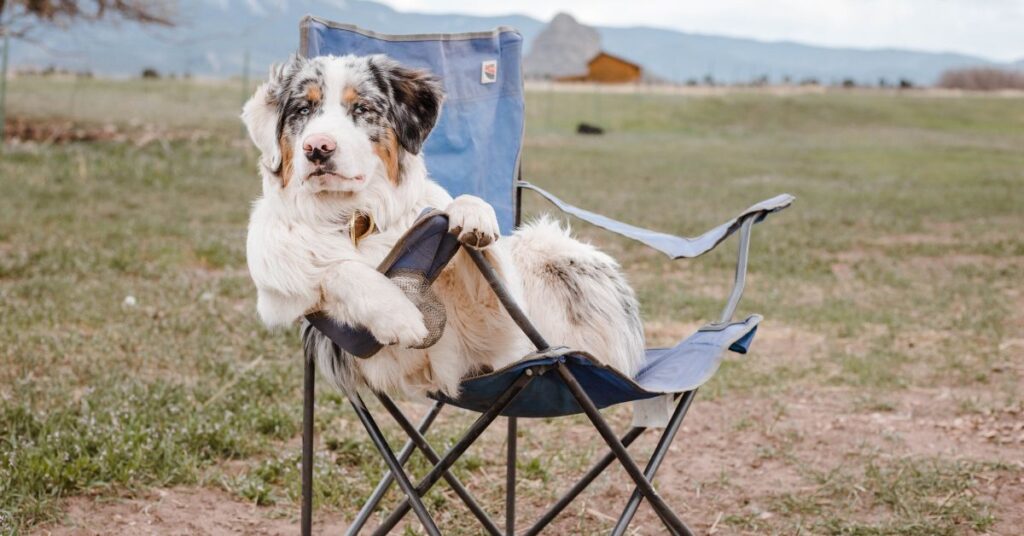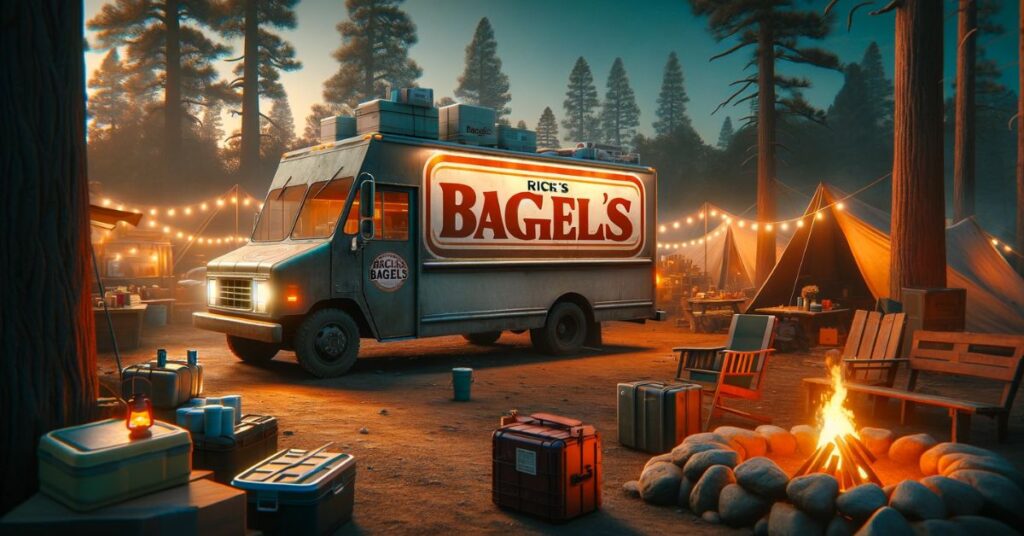Introduction: The Great Outdoors and the Not-So-Great Commercial Vehicles
The Lure of the Verdant Wilderness: Understanding the Appeal of Camping
Camping holds a unique allure for many. It’s an opportunity to escape from the confines of our routine urban existence, to immerse ourselves in nature’s wonder, and to breathe in the crisp, unpolluted air away from bustling cities.
The simplicity of camping awakens a primal instinct within us; it takes us back to a time when we were one with nature, far removed from technological distractions. The call of wild birds becomes our morning alarm, the rustling leaves narrate stories carried by the wind, and evenings are spent under a celestial spectacle as countless stars twinkle against the velvety darkness.
This romanticized reverence for camping is not just about enjoying scenic landscapes or seeking thrilling adventures; it’s also about embracing tranquility, rejuvenation, and perhaps even introspection that these serene settings offer. However, there’s also a practical aspect that adds to camping’s popularity.
It provides an affordable vacation option compared to hotels or resorts. Plus, there’s something immensely satisfying about setting up your own temporary abode amidst nature’s splendor – be it pitching tents or parking recreational vehicles (RVs).
A Conundrum in Paradise: Why Are Commercial Vehicles Persona Non Grata at Campsites?
Yet not all vehicles are welcomed with open arms into this tranquil paradise. Those who’ve attempted to park their commercial vehicles at campsites may have encountered raised eyebrows if not outright denial.
This seemingly unusual rule presents itself as an intriguing riddle – why exactly are commercial vehicles often barred from entering campsites? Is it due to their size?
But then again, aren’t some RVs equally large if not larger? Is it because they’re seen as symbols of industrialization intruding upon the sanctity of nature? The question remains… Why Don’t Campsites Allow Commercial Vehicles?
Or perhaps there’s a more pragmatic reasoning behind this? Could it be that they pose certain risks or challenges that are best avoided?
As we delve into these questions, we’ll explore the world of commercial vehicles, their impact on campsites, and the reasoning behind why many camping facilities opt to keep them at bay. Whether you’re a seasoned camper, someone who owns a commercial vehicle, or simply a curious soul, buckle up as we embark on this enlightening journey.

Commercial Vehicles Uncovered: Not Just the Titans of the Tarmac
To truly comprehend why some seemingly innocent vehicles are shunned from our cherished camping grounds, we must first unravel the complexity of what we mean by a ‘commercial vehicle.’ Despite popular belief, it’s not just about size. A commercial vehicle doesn’t need to be a hulking great lorry or a behemoth bus to fall under this remit.
The term ‘commercial vehicle’ is actually incredibly broad and encompasses any type of motorized, road-going vehicle that’s used for transporting goods or people. From delivery vans to hatchbacks employed as taxis, if it’s used for business purposes and has a potential higher than average mileage or wear and tear – it likely fits into the commercial category.
This definition may seem surprising. Surely, then your average car could be considered a commercial vehicle if used in certain circumstances?
Technically yes! Unexpectedly, private cars can become commercial vehicles overnight when used for delivering pizza or becoming an Uber driver for example.
It all comes down to use rather than make or model. However, there’s another dimension that further muddies our understanding: insurance classification.
In many jurisdictions across the globe, whether a vehicle is defined as ‘commercial’ often comes down to how it’s insured. If it has business-use insurance because it’s being utilized predominantly for work-related tasks – you’ve guessed it – it might very well be seen as ‘commercial.’
The Commercial Vehicle Spectrum: More Diverse Than You Think
Now that we’ve established what actually constitutes a ‘commercial vehicle,’ let’s dive deeper into shedding light on their variety — yes dear reader; they come in more shapes and sizes than you might think. On one end of the spectrum are Light Commercial Vehicles (LCVs).
These include vehicles like small vans, pickup trucks, and minivans. LCVs typically have a gross vehicle weight (the maximum allowed total of the weight of the vehicle and its cargo) that does not exceed 3.5 tonnes.
They’re commonly used for local deliveries and services, think your mail carrier or local electrician. Next up, we have Medium Commercial Vehicles (MCVs).
This group encompasses larger vans and minibuses that are often employed for heavier deliveries or small-scale public transportation. With a gross vehicle weight usually between 3.5 to 7 tonnes, these vehicles are definitely more substantial than their LCV counterparts but still relatively manageable in size.
At the upper end of the commercial vehicle scale are Heavy Commercial Vehicles (HCVs). These are your articulated lorries, coaches, fire engines – basically anything large with a gross vehicle weight typically exceeding 7 tonnes.
They’re designed for heavy-duty tasks like long-haul freight transport or carrying dozens of passengers. The diversity within the world of commercial vehicles is truly astounding; it’s a veritable kaleidoscope of different shapes and sizes all fulfilling unique roles within our societal machine.

The Impact of Commercial Vehicles on Campsites: Not Just a Pretty Picture
Environmental Concerns: Heavyweights on Delicate Ecosystems
When we think about the great outdoors, it’s not just about lush landscapes and picturesque panoramas, it’s also about the delicate ecosystems that thrive within these spaces. The introduction of commercial vehicles into this environment can be destructive. For instance, soil compaction is one major concern.
This occurs when the ground is pressed down by heavy weight, forcing air out of the soil and reducing its capacity to absorb rainwater. This might be bearable for a short stretch of road but becomes problematic in campsites where vegetation is plentiful.
This compaction can cause significant damage to plants and other flora by restricting nutrient uptake from their roots and causing erosion. When an ecosystem’s ability to naturally regenerate itself gets hampered by these factors, it can take longer for vegetation to grow back – sometimes years or even decades!
Moreover, root systems weakened through soil compaction make trees more susceptible to being uprooted in storms, creating potential hazards for unsuspecting campers. Additionally, commercial vehicles tend not only to be heavyweight but also high in stature.
This means they could interfere with low-hanging branches or disturb nesting avian wildlife that call these trees their home. The last thing any nature-loving camper wants is to wake up and find a devastated bird’s nest atop their vehicle.
Noise Pollution and Wildlife Disturbance: Unwelcome Sounds in Nature’s Silence
Beyond physical destruction, there’s another less visible yet similarly potent impact – noise pollution. Commercial vehicles are infamous for the raucous sounds they produce; imagine the tranquility of a campsite being shattered by the grating hum of a diesel engine or shrill beep-beep-beep of a backing-up truck.
Such noises aren’t just a nuisance to fellow campers seeking serene surroundings but also cause significant distress to wildlife. Many animals rely heavily on their acute sense of hearing for survival – for hunting, communicating, and sensing danger.
When their environment is polluted with unfamiliar sounds, it can throw off their natural instincts and behaviors. Some animals may even start avoiding these areas altogether which could lead to changes in predator-prey dynamics and affect the overall biodiversity of the campground.
Think about it this way: How would you like it if someone started revving an engine outside your bedroom window in the middle of the night? That’s exactly how our nocturnal woodland friends would feel when commercial vehicles invade their territory with noise pollution.
Safety Risks Associated with Commercial Vehicles in Campsites: Unseen Dangers
Commercial vehicles aren’t just detrimental from an environmental perspective but also pose safety risks within campsites. They are typically larger than your traditional family SUV or camper-van, so maneuvering them within small, confined camping lots can be challenging. This increases the risk of accidents not only involving other parked vehicles but also unsuspecting pedestrians strolling through the campsite.
Due to their size and bulkiness, visibility often gets compromised making it difficult for drivers to ascertain whether they might be endangering someone or something such as pets or wild animals around them during movement. Furthermore, these types of vehicles may often carry hazardous materials such as fuels or chemicals that might leak or spill causing potential harm to both humans and wildlife alike, making them another reason why they’re not usually welcomed with open arms at campgrounds across the globe.

Campsite Rules and Regulations: The Need-to-Know Basics
When it comes to camping, there are some common rules that most of us are already familiar with. No littering, respect the wildlife, and keep the noise down after sundown. However, beyond these basic laws of the land, campsites often have a bevy of additional regulations designed to protect both campers and the environment.
Many popular campsites enforce strict rules about where you can set up your tent or park your RV. These spots are usually carefully chosen to minimize impact on vegetation and wildlife habitats.
In many instances, campfires aren’t allowed unless there’s an existing fire ring and even then, some sites only allow wood collected from certain areas to prevent the spread of pests and diseases. While all these rules may initially seem a tad constraining – especially for first-time campers – they’re all part of a thoughtful strategy to ensure sustainable camping practices that safeguard our natural spaces for future generations.
Commercial Vehicles: The Elephant (or Truck) in the Room
Now let’s delve into something more specific: commercial vehicles. If you’ve ever wondered why Fred from work isn’t able to bring his delivery van along for a weekend in the wilderness, here’s why.
Most campsites have explicit policies that disallow commercial vehicles. This includes anything from large trucks or semis to vans with company logos emblazoned on their sides.
While this may seem somewhat arbitrary initially – after all, what harm could a stationary vehicle do? – it actually makes a lot of sense when you consider it more deeply.
Firstly, many commercial vehicles are quite large and heavy which can lead to soil compaction or damage vegetation around campsites. Secondary impacts like increased wear-and-tear on roads leading into campgrounds also play into this rule.
More importantly though is an issue you might not immediately think of: advertising. Campsites are designed to be places of respite, away from the hustle and bustle of our daily lives – and our commercialized society.
The presence of vehicles with company logos contradicts this ethos, detracting from the sense of escape that many campers seek. These policies aren’t intended to be punitive or discriminatory towards those who drive commercial vehicles; rather they’re part of a broader strategy designed to preserve the integrity of our camping experiences and the environments in which we revel.

The “Aesthetics” Argument: Keeping Nature Natural
How Commercial Vehicles Can Disrupt the Natural Ambiance
There is an unspoken serenity that comes with immersing oneself in nature. The rustling of leaves, the hoot of a distant owl, and the gentle lapping of a nearby stream all form an idyllic symphony that soothes the soul. Now, imagine this symphony being interrupted by more industrial sounds: the grinding gears of a delivery truck, or perhaps the low hum of refrigeration unit from a commercial van.
Commercial vehicles can inadvertently shatter this tranquility. Their angular silhouettes and large bodies often clad in bold colors and flashy logos are stark reminders of our fast-paced urban existence – an existence we’re often trying to escape when we venture into nature’s embrace.
These vehicles not only disrupt visual tranquility but also bring along sounds that can be decidedly out-of-place in the wilderness. Whether it’s the drone of a powerful engine or mechanical noises from onboard equipment, commercial vehicles can create auditory pollution that detracts from nature’s quiet beauty.
Moreover, they can often necessitate infrastructure like larger parking spaces or specialized facilities to accommodate their size or operational requirements. This level of human intervention can potentially mar landscapes and morph serene campsites into something resembling industrial parking lots.
Maintaining A Rustic, Wilderness Experience for Campers
Campsites are revered as sanctuaries where individuals can reconnect with nature on its own terms – raw and untamed. The sight of towering trees reaching for azure skies unmarred by any signs of human civilization, or listening to a riotous choir of cicadas under starlit umbrellas undimmed by city lights – these experiences are at risk when elements reminiscent of bustling human life intrude.
Campsite managers strive to cultivate environments where campers feel wholly enveloped by the natural world. This includes maintaining a rustic aesthetic that can be disrupted by the intrusion of commercial vehicles.
As we’ve explored, their presence can transform a campsite’s ambiance from one reminiscent of Thoreau’s Walden into an echo of modern technological society. There’s an unspoken passion for preservation amongst those who manage campsites, a fervor for safeguarding these slivers of unspoiled nature where people can drink in the world as it once was.
Commercial vehicles, while practical in many contexts, are at odds with this ethos. They represent industrialization and modernity – elements that feel distinctly out-of-place against backdrops unaltered by time or human touch.
It becomes clear why campsites often have regulations against commercial vehicles. It’s not just about environmental impact or potential safety risks – though both are valid concerns – but also about preserving the aesthetic and visceral experience of being one with nature that many campers seek.
Case Studies: When Commercial Vehicles Sneak into Campsites
The Tale of the Tractor-Trailer in Tahoe
In the serene setting of Lake Tahoe, campsite administrators were confronted with a unique challenge. A massive 18-wheeler had somehow maneuvered its way into one of their popular campsites.
The environmental impact was immediate and incontrovertible. Deep trenches were carved into the soft soil, causing significant erosion problems that persisted even after the behemoth was removed.
Visitors to the campsite also reported that the presence of such a monolithic machine disturbed their tranquil camping experience. Meanwhile, park personnel grappled with logistical nightmares as they attempted to safely extract this enormous vehicle from tight spaces without causing further harm to both natural and man-made structures.
Commercial Vans in Yellowstone: An Unexpected Issue
Yellowstone National Park faced a different scenario when it began seeing an influx of converted commercial vans as makeshift RVs. While these vans were not nearly as destructive physically as larger commercial vehicles, they brought other challenges. For instance, they lacked appropriate waste disposal systems that most RVs are equipped with, leading to improper and illegal dumping of waste.
Additionally, many curious wildlife creatures were attracted by food smells emanating from these vans due to inadequate storage facilities for foodstuffs. This caused worrying human-wildlife encounters that put both parties at risk.
Lessons Learned from These Experiences
Paving Way for Proactive Policies
Both these instances underscored the need for clearer policies regarding commercial vehicles at campsites. In response to these incidents, numerous campsites have now implemented strict rules prohibiting oversized vehicles and requiring proof of suitable living conversions in smaller commercial vehicles before allowing access. Further regulations concerning waste disposal and appropriate food storage were also subsequently introduced in many campsites across America following similar encounters.
Education: The Key for Preservation
More than just new policies, these experiences taught campsite administrators the importance of education. Both campers and commercial vehicle drivers need to understand why these rules are in place – they are not arbitrary, but instrumental in preserving our natural spaces.
Nowadays, many campsites provide educational materials and conduct briefings for visitors about the impact of their activities. By enlightening them about the environmental consequences of their actions, it is hoped that everyone can enjoy camping responsibly, without detriment to nature or disruption to fellow campers’ experience.

The Silver Linings: Charting a Course Through the Commercial Vehicle-Camping Conundrum
A Beacon of Hope: Alternative Parking and Accommodations
Not all hope is lost for those who own commercial vehicles but dream of nights under the stars. There are several solutions that can provide a happy middle ground.
Some campsites offer separate parking areas for larger vehicles, allowing you to park your commercial vehicle and set up a smaller campsite nearby. This keeps the heavy vehicular traffic off sensitive landscapes while still providing you with access to all the campsite amenities.
For those who wish to sleep in their vehicles, consider locating campgrounds that specifically cater to RVs or large vans. These sites often have wider roads, larger camping spots, and reinforced grounds designed with larger vehicles in mind.
Of course, it’s important to differentiate between commercial vehicles used for work purposes and those transformed into cozy mobile homes; these two should not be lumped together as they present different challenges. Another solution could be off-site parking options coupled with shuttle services.
Some areas, especially near national parks or popular tourist destinations, offer parking lots where you can safely leave your vehicle and take a shuttle bus to the campground. This not only helps protect the environment but also solves any potential size limitations at campsites.
The Great Swap: Transitioning from Commercial Vehicles to Camping-Friendly Machines
If you regularly find yourself yearning for woodland retreats but hindered by your industrial beast of burden, it might be worth considering an investment in a more camping-friendly vehicle. When looking for alternatives, consider factors like size – smaller is usually better when it comes to maneuvering through wilderness roads – fuel efficiency, and impact on nature – lighter is less damaging on delicate terrains.
Campervans are an increasingly popular option, providing a homely space without the heft of a larger commercial vehicle. While they don’t have the square footage of an RV, creative design solutions can pack in everything you need.
With solar panels for power, water filtration systems for potable water, and cleverly designed fold-out beds and tables, it can be just like taking your home on the road. Another solid alternative is a pickup truck with a camper shell or a rooftop tent.
While not as spacious as an RV or campervan, these setups retain the off-road capabilities of trucks while providing shelter for sleeping. This option might be particularly attractive to those who enjoy exploring hard-to-reach wilderness areas inaccessible by larger vehicles.

